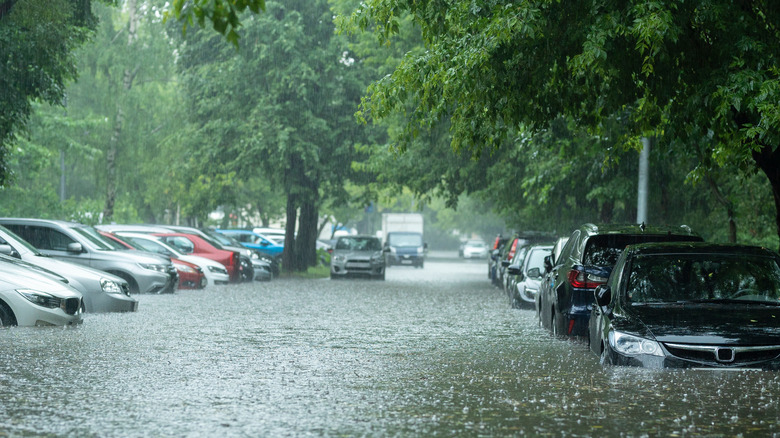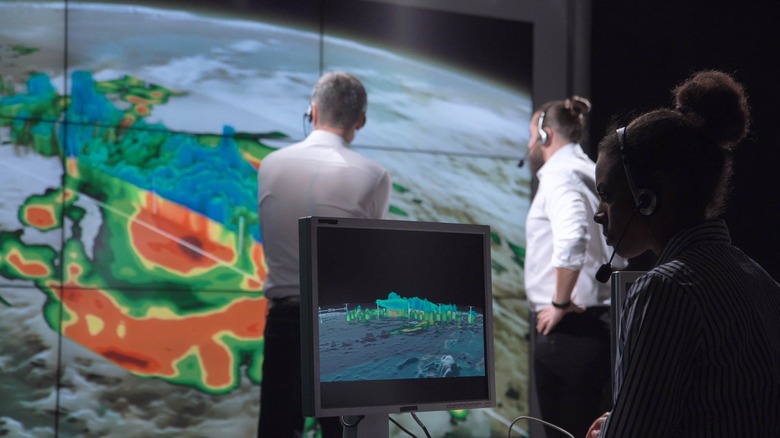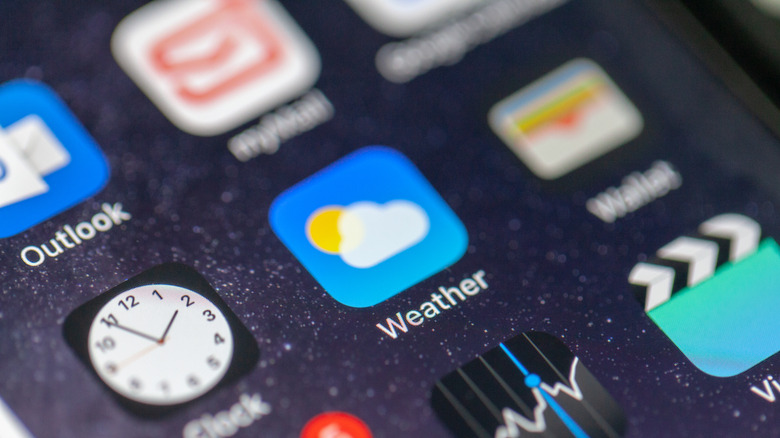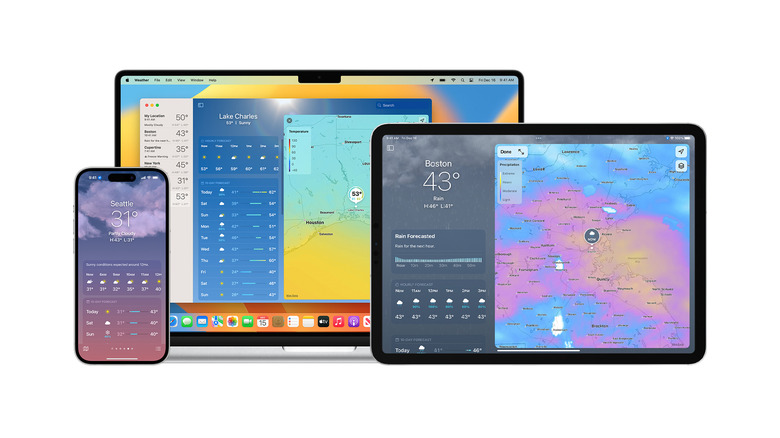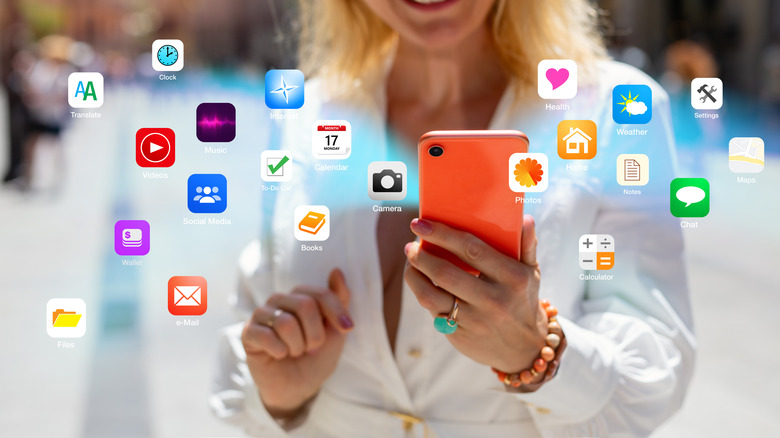Here's Why Your iPhone's Weather App Is Wrong So Often
Have you ever made plans based on weather reports, only to be rained out when the day in question arrives? You're not alone. The forecast can be extremely fickle.
Weather is an unpredictable beast that man can't truly, accurately predict. Folks are still scratching their heads about how you can feel wintry conditions and summer-like weather within the span of a few days, even in relatively consistent climates. Additionally, with the effects of global warming catching up to us, weather forecasts feel more and more like wishful stabs in the dark.
Many folks check forecasts on their iPhones' built-in Weather app. It's convenient, but when its predictions consistently clash with reality, you might start to wonder whether there's a better alternative. Sadly, there may not be – it's an unfortunate reminder of the actual reality, which we'll explain below.
It's not always the iPhone's fault
Weather is ever changing, and no one can truly know how it will behave from one day to the next. And even if you wake up to a beautiful 72-degree high, in many cases, it's still possible for outside temperatures to fall well short.
Weather forecasts are actually created based on simulation models, which use historical data to predict temperature and humidity, precipitation, wind patterns, and microclimate changes. What's more, not all meteorologists use the same models or interpret data the same way, which is why you can see conflicting weather reports from different sources.
In iPhone's case, it mostly pulls from The Weather Channel for North America. According to a report from Forecast Watch that tracked weather accuracy from 2017 through 2020, The Weather Channel was found to have the most accurate reporting of any national meteorological survey. But it also aggregates data from other sources, too, so the data it presents may not always match up with what you'd find in the actual Weather Channel app.
How you can ensure you have the most accurate weather data
The biggest thing you can do on your iPhone is to check your location services. If you input your zip code to pull weather data, it may show you a forecast based on the wider surrounding or metropolitan area. That's generally consistent enough to trust, but in locales that are extremely sensitive to microclimate changes — such as the San Francisco Bay area — you may see wildly conflicting forecasts.
To combat this, if you're comfortable, try giving the Weather app access to your precise location at all times:
-
On your iPhone, open the Settings app.
-
Scroll down and tap "Weather," then tap "Location."
-
Under "Allow Location Access," select "While Using the App or Widgets."
-
Toggle on the "Precise Location" option.
Now, go into the Weather app and make sure that the primary weather report you're using is always set to "My Location." Make sure the widget is set to the same if you use it (long press it and tap "Edit Widget"). You can add additional locations if you like, based on city and zip code, but these should mostly be used when you're scoping out the weather for an upcoming trip.
Shutting down Dark Sky may have been a mistake
Apple acquired the popular weather app DarkSky, which allowed users to view hyperlocal forecasts, hourly predictions for the next 10 days, and high-resolution radar maps, back in March 2020. Dark Sky was eventually shut down in January 2023, — though the shutdown was planned from the start. Apple spent the time in between the app's acquisition and eventual death migrating many of its features over to Weather.
However, despite the features making it over, many users miss the old app and wish Apple had simply kept it going. One large criticism seems to center around the user interface. Dark Sky was simple to navigate and laid everything out very clearly. For many, Apple's weather app is the opposite. In a piece criticizing the news, Fast Compay writer Jesus Diaz summed it up beautifully by saying: "Sky's best feature was its perfectly simple functionality. Apple Weather, on the other hand, makes you feel like a Roman augur trying to read the entrails of a dove."
While some users may believe Dark Sky was also more accurate than Weather, this isn't the case. Both apps used the exact same data set, so they produced the same results. Any notions of a difference in accuracy are more likely down to bias against Weather. When you really hate something, you judge it more harshly.
Other weather apps are available
Apple's built-in weather app comes with your device and is integrated into many other features, so sticking with that is undoubtedly the most convenient option. However, there are alternatives available if Weather really isn't doing it for you. You can find these alternatives on the App Store.
Of the non-Apple Apps on offer, the one produced by "The Weather Channel" may be your best option. It has a 4.7 star rating which matches the one Apple's own effort received, though some reviewers are complaining about the number of ads and the app's overall functionality. The Weather Channel's app currently holds the number one spot on the App Store's list of free weather apps.
Accuweather also has an app available that boasts a 4.6-star rating and claims to be "Internationally recognized by the World Meteorological Organization with awards making AccuWeather one of the best weather apps." Reviewers praise the app's easy-to-navigate interface, though like its competitors the number of ads users have to sit through is a source of criticism.
